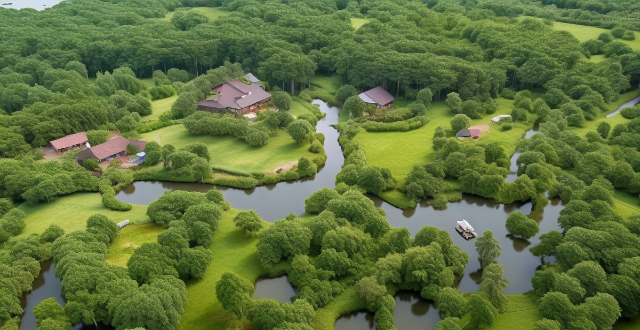In summary, wetlands are crucial ecosystems that play a vital role in water purification and flood control. They act as natural filters, removing sediments, nutrients, and pollutants from water while also providing buffering capacity for floodwaters. By preserving and restoring wetlands, we can ensure clean water resources and minimize the risks associated with flooding.

Wetlands: A Natural Solution for Water Purification and Flood Control
Wetlands, often referred to as the "kidneys of the landscape," play a crucial role in water purification and flood control. These unique ecosystems are not only havens for biodiversity but also act as natural filters that help maintain the health and balance of our water resources. Let's delve into their significance in detail:
Water Purification
Filtration of Impurities
- Sedimentation: Wetlands slow down the flow of water, allowing sediments and particulate matter to settle out of the water column.
- Nutrient Removal: Plants and microorganisms within wetlands absorb nutrients like nitrogen and phosphorus, preventing algal blooms and maintaining water quality.
- Chemical Transformation: Wetland soils and plants can transform or degrade certain pollutants, reducing their harmful effects on the environment.
Biological Uptake
- Vegetative Filtration: Emergent plants and submerged vegetation in wetlands act as biological filters, trapping and metabolizing pollutants.
- Microbial Action: The diverse community of microorganisms in wetlands breaks down organic matter and contributes to the degradation of contaminants.
Buffering Capacity
- pH Regulation: Wetlands can help neutralize acidic or basic inputs, maintaining a stable pH that is conducive for aquatic life.
- Oxygenation: The movement of water through wetlands promotes oxygen exchange, which is essential for supporting healthy ecosystems.
Flood Control
Stormwater Management
- Water Retention: Wetlands store excess stormwater, reducing the volume that reaches rivers and streams during heavy rainfall events.
- Peak Flow Reduction: By slowing down the rate at which water enters bodies of water, wetlands mitigate the risk of flooding downstream.
Erosion Prevention
- Sediment Capture: Wetlands stabilize banks and shorelines, trapping eroded soil particles before they can be carried away by currents.
- Buffer Zones: Acting as natural barriers, wetlands protect adjacent land from the impacts of flood waters.
Hydrological Buffering
- Groundwater Recharge: Wetlands contribute to groundwater recharge, helping to maintain water tables and support baseflow in rivers during dry periods.
- Water Table Regulation: Through their interactions with both surface water and groundwater, wetlands help regulate local water tables, reducing the potential for flooding.
Conclusion
Wetlands serve as nature's way of purifying water and controlling floods. Their intricate web of physical, chemical, and biological processes work in harmony to ensure clean water resources and minimize the risks associated with flooding. By preserving and restoring these vital ecosystems, we not only protect our environment but also enhance our resilience against the challenges posed by climate change and urban development.